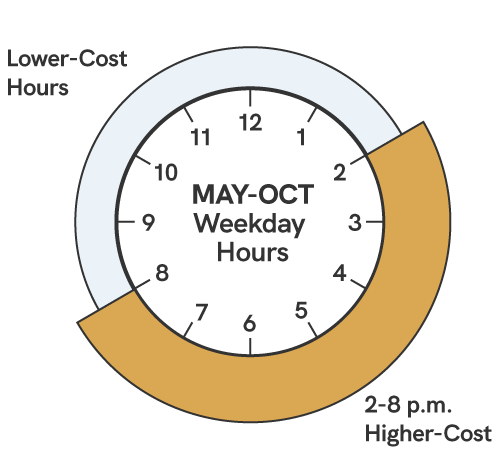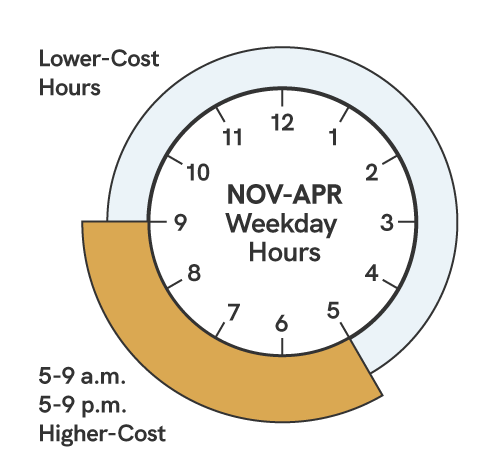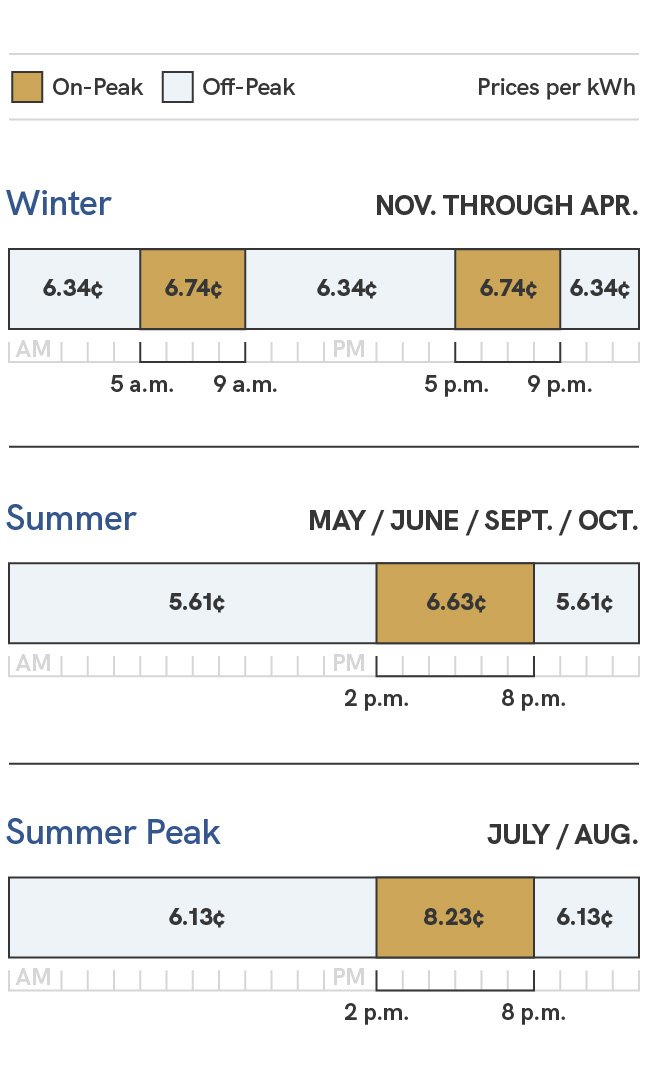
Average Demand Price Plan for solar customers
This plan is ideal for customers who produce some of their own energy with rooftop solar or other distributed generation technologies and are able to shift energy use from on-peak to off-peak hours.
On this page:
Public pricing processSRP recently closed a public pricing process on Feb. 27, 2025. The Board voted to approve SRP Management's proposal which will take effect with the November 2025 billing cycle. For more information, please visit the price process page. |
How it works
You’ve got potential to save on the Average Demand Price Plan if you can limit your household demand for energy during on-peak hours.
To do this, make sure that major appliances, such as the dishwasher, clothes washer or dryer, don't run at the same time and never during on-peak hours.
On-peak hours are weekdays from 2–8 p.m. May through October and weekdays from 5–9 a.m. and 5–9 p.m. November through April. All other times, including weekends and six holidays , are off-peak.


This plan may be right for you if:
- You have routine on-peak demand of 10 kW or higher.
- You have big variations in your demand – meaning, for example, you typically have a demand of 5 kW, but once or twice a month your demand reaches 10 kW or more.
- You don’t want to worry about unexpected spikes in demand.
Pricing
See how to save on solar and demand price plans.
Energy charge - Energy is priced per kilowatt-hour (kWh) and your monthly energy charges are based on the amount of energy used at on- and off-peak times during your billing cycle. Off-peak times (when demand is low) offer the lowest prices and vary by time of day and year.
Monthly service charge - This is a fixed fee covering the cost of facilities, equipment, billing and customer service. Most customers on this price plan will pay a monthly service charge of $32.44, although those with larger homes may pay up to $45.44 per month.

Ready to change your price plan?
Think the Average Demand Price Plan would be a good fit for your household and lifestyle? Call (602) 236-4448(602) 236-4448. We’re here to help Monday through Friday between 7 a.m. and 7 p.m.
For more information, see the Average Demand Price Plan sheet.


